Total Talent Management Is No Longer Optional: A Discussion with Martin Thomas of Philips
authors are vetted experts in their fields and write on topics in which they are extremely knowledgeable. All of our content is peer reviewed and validated by world-class professionals.

Talent management requires a holistic approach that opens every possible sourcing channel—on-demand talent platforms, internal networks, permanent employees, contingent workers, statement-of-work (SOW) contractors, freelance platforms, and more—bringing in talent from anywhere in the world to work, whether a freelancer or full-time employee. This strategy can be best summed up as total talent management. It’s a forward-facing company approach that maximizes access to the world’s best talent.
To help organizations understand total talent management, Martin Thomas, head of total workforce management at Philips, offers some pointers for pivoting organizational strategies toward an all-encompassing approach to talent sourcing.
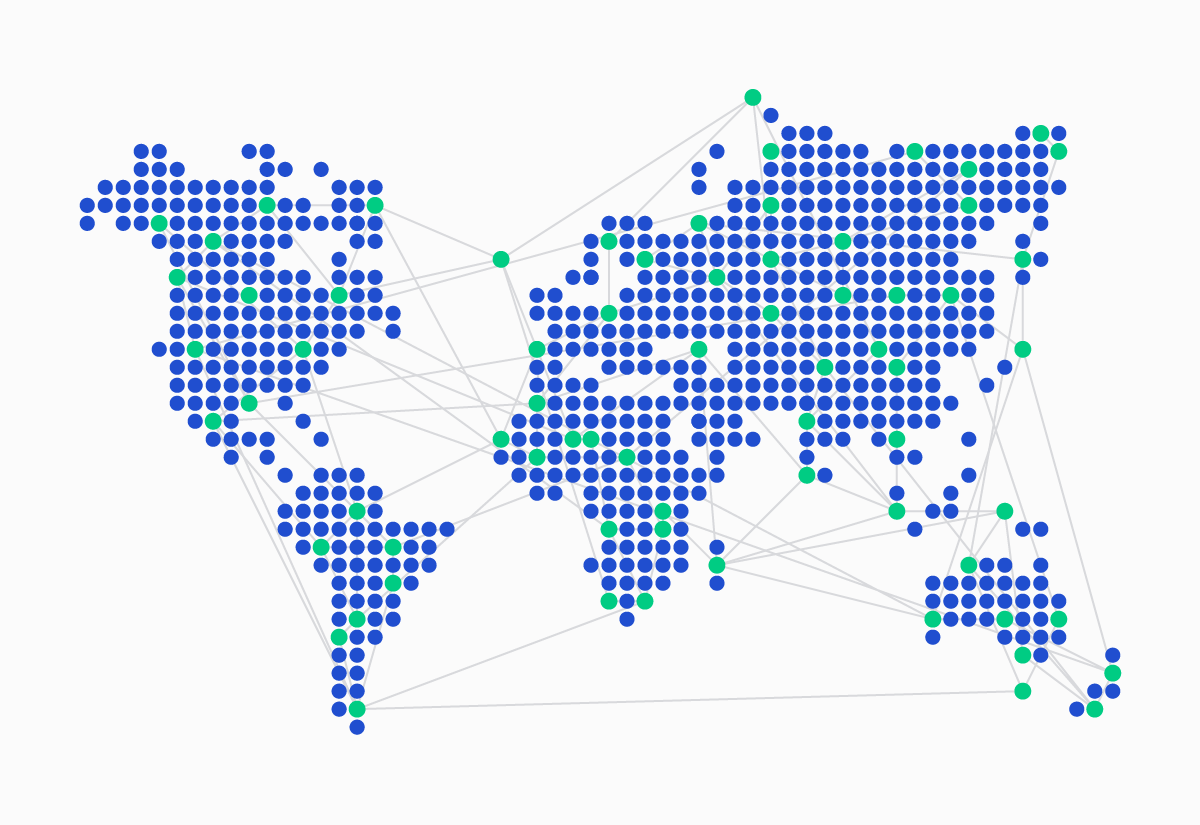
From Army Captain to Recruitment
Thomas moved into HR and Recruitment after working with the British Army, where he was a captain of the Royal Artillery. It turned out that the skills he mastered in the army would translate to HR and recruitment. During a mini-MBA at the University of Westminster in London, Thomas was asked to build a competency-based CV to show how his skill set might apply to a civilian environment, and then apply for some jobs based on that CV.
“I got invited for an interview... I got offered the job of a recruitment consultant. I believe I got it based on my ability to build relationships and rapport with people through my communication skills.” Over time, those skills took Thomas far: He worked with major firms such as British Telecom, Barclays, AIG, and BBC before moving to Philips.
The most critical qualities he believes he’s brought with him from the army include rapport-building/communication, the importance of vision, and being able to solidify a reference or orientation to make processes effective for stakeholders. His four years of experience as a global head of talent acquisition and subsequently head of total workforce management are a testament to his expertise pertaining to total talent management.
Freelancers Are Critical to Total Talent Strategy
According to a 2018 research paper by SAP Fieldglass and Oxford Economics, the external workforce—gig workers, contingent workers, freelancers, or on-demand talent—is “essential to improving business performance.” In fact, companies are spending more money on the external workforce than ever before.
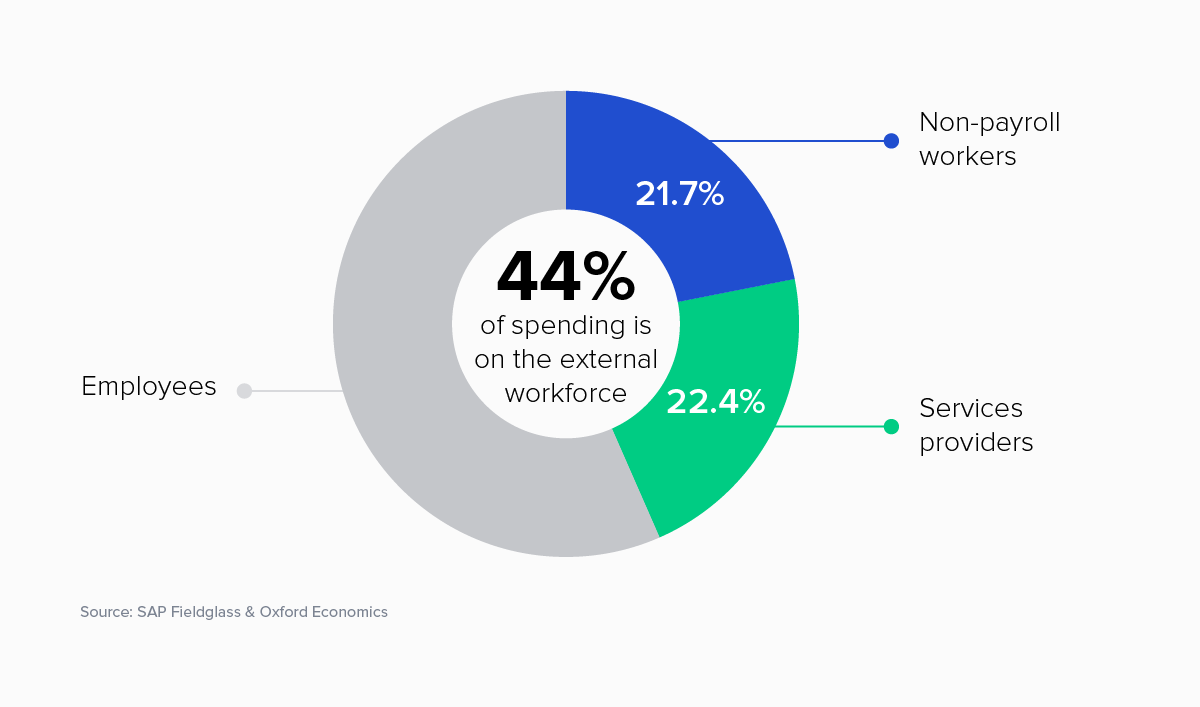
Nearly half of respondents in the Oxford research paper say they would be unable to conduct business as usual without an external workforce, with 74% of the executives surveyed planning on using online, on-demand talent platforms for hires in the next three years. Put simply, Thomas says that having a total talent management strategy—one that considers this workforce as much as traditional employees—is no longer optional.
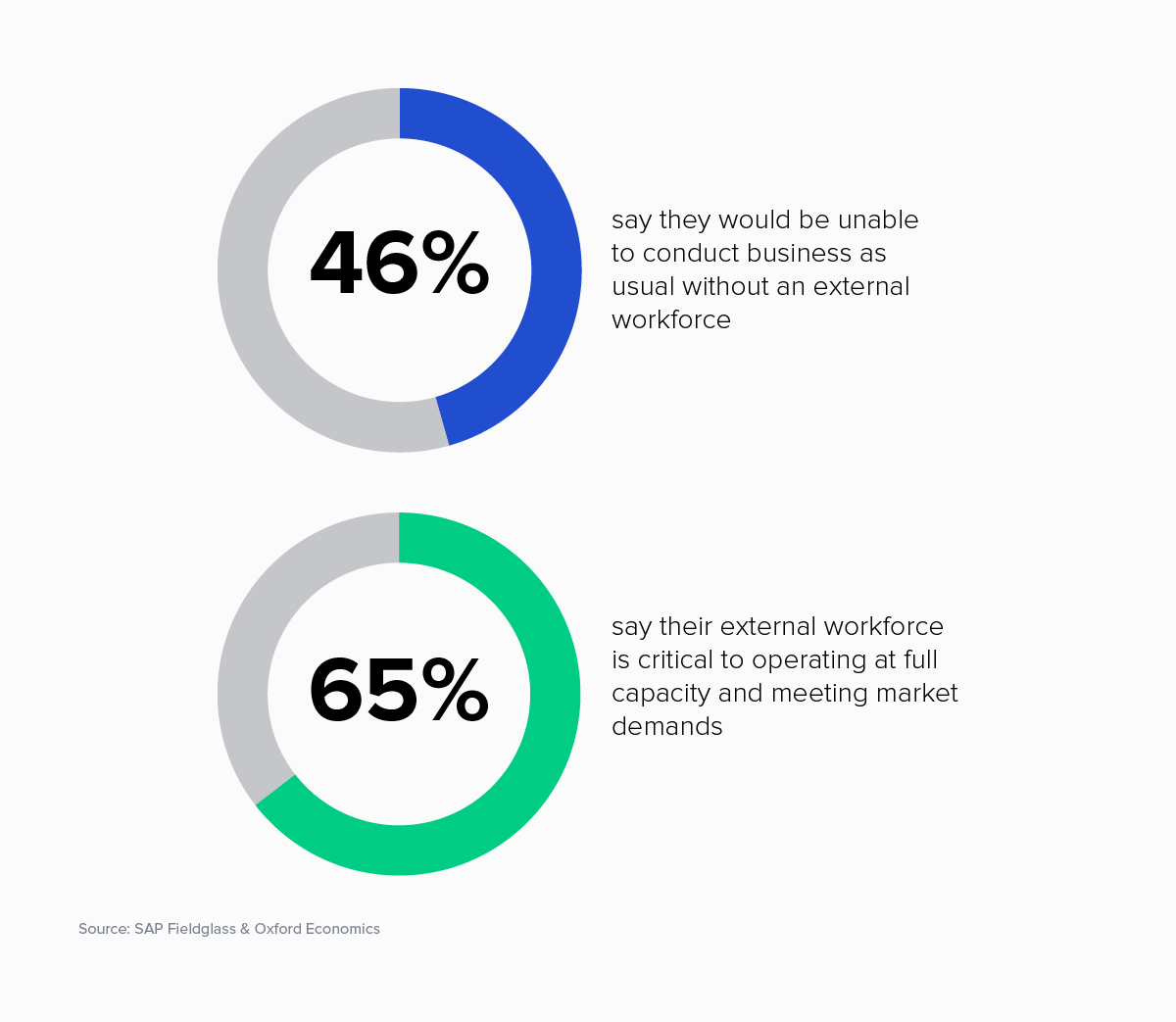
However, Thomas also warns that just because a company understands the necessity of using external talent, it does not mean that their strategy is a total talent management process. In the Oxford report, companies’ external workforce strategies were categorized as Beginner, Follower, Fast Follower, or Pacesetter. The following criteria help organizations better understand how to become pacesetters.
1. Visibility. Are company executives informed about such data as the number of workers in their external workforce? Do they know the answer to key questions like:
- Where are they located?
- What are their responsibilities?
- What are they being paid?
- How are compliance issues handled?
- What is the quality of work?
- How are access and confidentiality handled?
- What is the tenure of external workers?
2. Effective management. Can the right talent be found at the right time? Are they tracking resource quality and project quality, making sure that only performers are re-engaged? Are they managing digital security issues? Are they managing compliance issues?
3. Business impact. According to the survey, positive business impacts were seen when using external talent:
- Increases speed to market (66%)
- Increases organizational agility (64%)
- Improves overall financial performance (62%)
- Improves competitiveness in a digital world (47%)
However, business impact is not just about staying competitive and closing the skills gap. Using an external workforce is likely to raise the bar on skill and talent and improve company culture. In the Oxford study, the percentage of companies that reported these outcomes increased with each level of strategic maturity, with the majority of Pace Setters enjoying these outcomes.
In the end, only 10% of respondents were considered “Pace Setters,” meeting all three criteria.
Our discussion with Thomas revealed that Philips is definitively in this category and offers a multitude of learnings for companies hoping to follow suit. Thomas says today’s workforce has the potential for:
- Greater flexibility
- Greater agility
- More ways to find opportunities
- Better ways to assess opportunities
- Increased speed of innovation
- Higher ROI
- Stronger ability to help companies compete
- Large numbers of networking groups
Organizations will have to make themselves available to these individuals in as many different ways as the workforce demands. It is currently a candidate’s marketplace, and there’s enormous competition for top talent. Thomas states, “If you’re not embracing all the channels [methods of engaging talent], then you’re missing out on a source of talent and making it harder on yourself. You have to embrace as many channels as there are out there.”
That’s what Philips does. They then focus on those sourcing channels that deliver the best quality of worker at the best cost in the right location, whether that’s someone on an employment contract or through a platform.
What Makes Philips a Pacesetter?
Over the years, Philips shifted from its lightbulb manufacturing roots to LEDs, which eventually led to its becoming a health tech company. “Digitalization is massive for everyone, including Philips,” says Thomas. “We’ve leveraged the ability to share images and data around the health of a client to allow for better diagnosis, better care, quicker resolution, and less-invasive surgery ... It's all about patient well-being and giving a better service at a better cost.”
Naturally, the shifts in company purpose led to a shift in the skill sets required. As Thomas quipped, “If you’re making lightbulbs, you don’t tend to be as digital as a company building MRI machines and hospital healthcare systems.”
Shifts in the way people want to work were simultaneously occurring. Philips knew it needed to pivot its strategy to leverage the new workforce demographics to get the skill sets it needed. They recognized early that the future workforce wanted flexibility, so they focused on getting the right skills at the right time by combining both a permanent and contingent workforce.
To do that, they brought in Thomas, who came into his current role with a vision for a total talent management strategy. “My role is fundamentally driven by wanting to have a multichannel sourcing strategy. Philips recognized that there are many choices when determining how to get work done.” Thomas offers a host of key questions organizations should ask themselves:
- What sourcing channels are available?
- Where can the work be accomplished?
- What skills are needed?
- Where is the available talent located?
As part of the multi-channel sourcing strategy, Thomas utilizes on-demand talent platforms in addition to Philips’s own career site. He realizes that in addition to targeting permanent talent, the Philips career site can also attract flexible talent, build talent pools, even engage with alumni that might potentially want to engage in a project despite no longer being with the company.
Thomas applauds Philips for evolving from an over-reliance on agencies into a company that recognizes that to attract talent, they have to engage in many different ways. That strategy goes beyond channels, he says, and includes elements like the type of contracts they use.
Thomas suggests the following tips to help organizations capitalize on available talent.
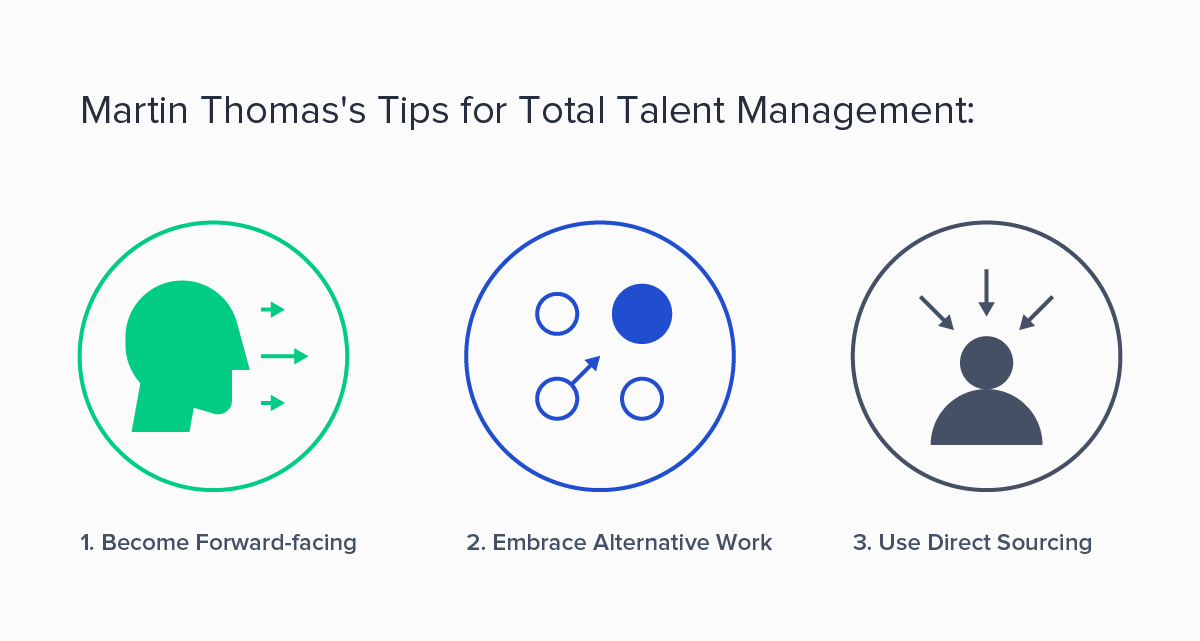
#1: Become Forward-facing
One reason that Thomas enjoys being part of Philips is that they have a clear purpose: to improve the lives of people. “We hear stories about people who use our products to save lives, to improve their health, and to recover from illness,” Thomas says. “It makes it very meaningful to work here.” He is also impressed with the talent acquisition organization within Philips. “It is very well-organized, focuses on the total workforce, and is forward-facing.”
He suggests that to be forward-facing, organizations should do the following:
- Look at the total workforce of the future. Think about how your organization will get the skill and capability it needs through every channel, such as permanent, contingent, SOW, on-demand talent, freelancers, and gig workers. Consider all the different ways that work can get done and then find or build dedicated sourcing platforms that are attractive to these candidate segments.
- Move the ownership of contingent labor from procurement to HR. This was a key move for Philips. “It made a big statement that says ‘we want to have this strategy for acquiring skills regardless of the sourcing channel or contracts used to engage with that skill,’” says Thomas. “Having a holistic, combined approach is very forward-looking.”
#2: Embrace Alternative Work Arrangements
Thomas is not enamored with the phrase “the future of work.” He says, “It’s not really the workforce of the future anymore because it’s with us today.”
Part of a total talent management initiative means meeting employee preferences for a working style—chief and trending among them is remote work, either partially or 100 percent of the time. Philips integrates remote work policies across the organization because they don’t want to restrict how skilled talent can be accessed.
Still, Thomas says that remote policies can vary within Philips, due to the nature of some roles within the organization. For example, 30% of US Philips employees work remotely – full-time or part of the time. Thomas himself is in a global role, based in London, UK, and is a home-based worker. “It’s very well-embraced in some countries in Philips,” he says. “In others, it is not as culturally acceptable and we also have to recognize that for some people, not practicable.”
Thomas believes that remote work is not a one-size-fits-all solution. Rather, it’s about evaluating each role and each skill—particularly critical in a big organization like Philips—and finding the optimal arrangement both in terms of location (in-location vs. remote) and working arrangement (inhouse or contingent/gig/on-demand).
Thomas’s hiring philosophy encompasses the holistic approach he’s cemented at Philips. “Rather than just replacing somebody in the same location, I think about whether it is the right location and where the skill is available. I think about if the work can be done remotely. I consider whether it can be done through a different way of working, such as a contingent worker or outsourced. I evaluate the best method and location for getting the work done based on what the skill is and the cost.”
#3: Use Direct Sourcing
We asked Thomas what companies are doing now with regard to recruitment that he never thought they’d be doing. He cites the huge growth in direct sourcing for the recruitment of external workers. Direct sourcing is the process of building external talent pools, which can be drawn from:
- Former employees
- Retired employees
- Applicants within the system
- Peer-to-peer, word-of-mouth
Although an organization can direct source alone, they often pair with a managed service provider (MSP) to engage, manage, and pay the workers. Using direct sourcing can reduce the time and money traditionally associated with recruiting and hiring. This process helps ensure that the organization can get the right talent when it needs it.
According to Thomas, staffing agencies have a significant role within a direct sourcing strategy. “They are the sharp shooters, the specialists. There’s a need to engage with them for specific types of talent. However, when you need someone quickly, direct sourcing is something to consider.”
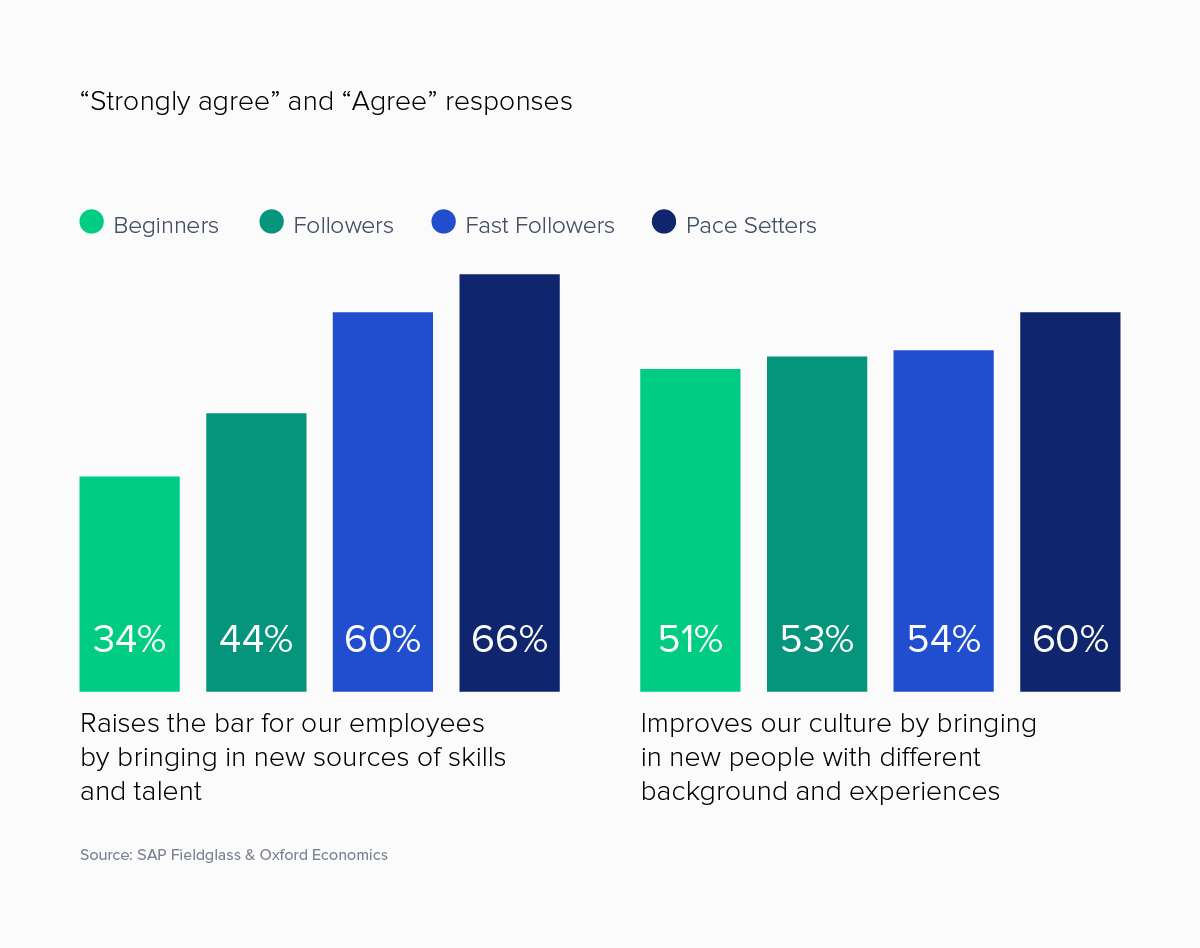
Next-level Maturity for On-demand
In order to bring on-demand work to a whole new level of maturity, Thomas feels that there is some work that needs to be done. He highlights two challenges:
- Ongoing change management and education. “For some people working remotely or working flexibly is absolutely impossible,” says Thomas. Some workers might be more personally inclined to in-person work environments, or the nature of their work might be prohibitive, like manufacturing-oriented roles or extremely confidential work. Still, Thomas says the possibilities of remote work are shifting, prompting continual learning, experimentation, and evolution. “It’s certainly a journey that we're all on. People need to recognize that we’re all at different stages of that evolution.”
- Liability issues. Who is liable if something goes wrong with a project? Is it the assignment manager who engaged the worker? Is it the platform that curated their talent pool and said the worker is capable? Is it the individual worker who stated they have the ability?
These challenges are small compared to what’s already possible now. According to Thomas, the future has arrived, and organizations that want to capitalize on talent when and where it is needed must embrace a total talent management strategy. By following pacesetter companies like Philips and creating similar strategies, enterprise companies can reap the benefits of an external workforce, keep their organizations agile and flexible, and remain viable and competitive moving into whatever revolutions come next.
